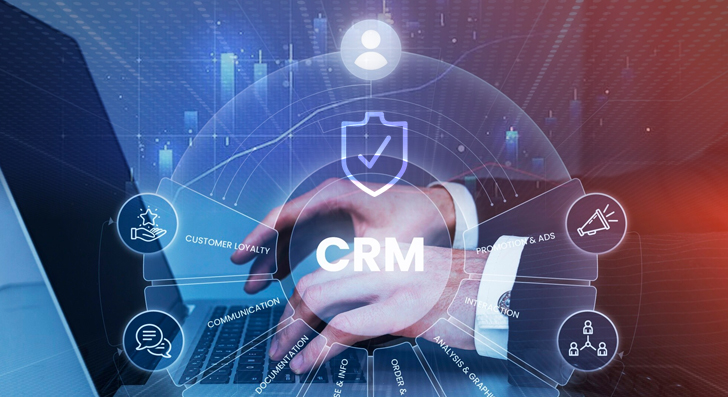Customer Relationship Management (CRM) forms the backbone of a growing customer-centric business. The use of CRM for insurance proves to be a perfect fit as it helps insurers match changing market conditions and customer expectations. With CRM insurance software in the picture, insurers will find it easier to retain policyholders through rich and meaningful experiences. Plus, it will improve their product’s value proposition by personalizing policies depending on the individual’s profile, requirements and associated risks.

However, such advantages may seem intangible. For a more realistic understanding of how insurance CRM systems improve business, there is a need for a comprehensive cost-benefit analysis that considers key features and functionalities, returns on investment (ROI), best practices for CRM implementation in insurance industry, and more.
Key Features and Functions of CRM
The following are some key features and functions of CRM insurance software:
- Policyholder Data Management
Useful for collation and centralization of policyholder information. Apart from maintaining personal data and contact information, it should also store their preferences, behavioral and psychographic data, records of past interactions, etc. to grant finer personalization. - Insurance Sales Automation
It takes all the guesswork out from sales and marketing-related activities such as lead management, qualification, prioritization, and appropriate engagement and conversion strategies for a smoother sales process. - Effortless Policy Management
For storing all policy-related details, such as digital copies of the policy, historical claims, renewal dates, etc., for effective policy administration, issuing timely alerts, and harnessing cross-selling and upselling opportunities. - Improved Analytics and Reporting
To generate data-driven insights on various processes. It grants visibility to any inefficiencies and bottlenecks that add friction to the insurance value chain. Based on such insight, it is possible to make smarter decisions and inject efficiency throughout. - Better Customer Experience
With omnichannel communication being the norm, this will help you connect with customers through their preferred channels. It also allows automation in communication, which helps issue real-time alerts on claims status, policy renewal, etc. for meaningful customer interactions.
Guide to CRM Cost-Benefit Analysis and ROI Measurement
Now that we’ve discussed the key features and functionalities that add value to insurance CRM systems, we move on to a thorough cost-benefit analysis followed by ROI measurement.
1. CRM Insurance Software Cost Analysis
Start by identifying the various costs associated with insurance CRM systems. These typically include:
| Cost Category | Description |
|---|---|
| Procurement Costs | One-time lumpsum amount or subscription cost, licensing costs, and feature add-ons |
| Implementation Costs | Customization, configuration, integration, migration, and system consolidation expenses |
| Training Expenses | Comprehensive training and onboarding programs for employees |
| Maintenance and Upgrades | Ongoing support, system updates, potential upgrades, and maintenance cost |
| Opportunity Costs | Resources allocated during the transition phase and the resulting loss of opportunity |
2. CRM Insurance Software Benefit Analysis
Next, we take stock of the quantifiable and qualitative benefits that come with insurance CRM software implementation.
Quantifiable Benefits:- Sales Revenue (in $): Improved lead management and seamless sales cycles increase revenue.
- Cost Savings (in $): Efficient processes and minimal cost overheads increase cost savings.
- Customer Retention (in $ or metrics like NPS/CSAT): Enriched customer experiences foster loyalty and increase revenue through repeat purchases, upselling and cross-selling success, and continued business
- Operational Efficiency (in hrs): Enhanced productivity, reduced manual efforts, and improved morale drive efficiency.
- Improved Customer Satisfaction: Service personalization and enhanced customer experiences boost customer satisfaction rates.
- Competitive Differentiator: The data-driven insights from the CRM system can improve products and services, which help insurers stand out.
- Branding: The customer-centricity positions the insurer favorably in the market and improves brand image and customer perception.
- Digital Transformation: The insurance CRM implementation process digitally transforms all insurance operations and makes them data-driven.
3. ROI Calculation and Analysis
Finally, it is possible to conduct ROI calculation and analysis using the following methods:
- Net Gains: Subtract the total costs from the total benefits to determine the net value gained.
- ROI: ROI is a ratio of the net gain and the total cost, and is expressed as a percentage.
- Break-even point: Identify the point where the monetary value of benefits becomes equal to the total cost.
Get the Most Out of Your Insurance CRM Investment
Best Practices for Successful CRM Implementation
Once there is a justifiable case for insurance CRM systems, it is time for implementation. The following best practices increase the chances of success:
- Identify the specific business processes or customer interactions that need transformation. Use the resulting improvements and expected outcomes as the objective of CRM implementation.
- Involve key stakeholders from different teams and departments (sales, underwriting, claims, customer service, etc.) to match pan-organizational requirements.
- Map out the customer journey from prospect to evangelist and identify the various touchpoints where the CRM can add value.
- Select a CRM system that matches specific use cases and unique business requirements while staying scalable and flexible.
- Outline comprehensive training and onboarding programs to ensure that all stakeholders are proficient at working with the insurance CRM solution.
- Monitor and evaluate strengths and weaknesses of CRM implementation and introduce any strategies for process optimization or adjustments.
Conclusion
Insurance CRM software implementation promises immense potential to boost customer relationships and drive operational efficiency. The detailed cost-benefit analysis illustrates its capacity to boost revenue, cut down cost overheads, and improve overall market positioning. Modern-day CRM solutions are expected to leverage technological advancements like AI and ML for enhanced personalization, seamless integration, and deeper analytics. In short, insurance CRM systems are about to get even better and offer more value for money!
Case in Focus
A leading provider of diversified financial services across 18 countries, faced significant challenges due to disconnected legacy systems, high maintenance costs, and a lack of unified customer data. We provided a comprehensive solution by developing a scalable, unified customer connect platform powered by InsuranceNXT, consolidating disparate systems into a Common Database Repository (CDR). This not only reduced maintenance and licensing costs by over $2 million annually but also significantly improved customer experience, leading to increased revenue opportunities through cross-selling and upselling. For more details, refer to the complete case study.





